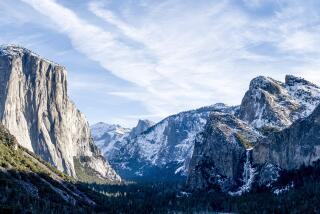Frustrations grow as L.A. fire victims demand to get back into their decimated neighborhoods

- Share via
As winds began to die down Wednesday, there was growing despair and frustration in the vast fire zones among residents who were demanding to get back into their neighborhoods.
A brigade of firefighters spent the day reinforcing containment lines and cooling hot spots in the Palisades and Eaton fires to lessen the risk that strong winds would carry embers into unburned areas. Officials estimate that the fires have destroyed more than 12,000 structures, including many homes, making them two of the most destructive — and deadliest — wildfires in California history.
This article is provided free of charge to keep our community safe and supported in the aftermath of the devastating fires in Southern California.
As firefighters contended with another day of dry, windy conditions, residents continued to confront their losses and the pain of not being able to return home.
Hundreds of people who have lost homes and belongings have visited Federal Emergency Management Agency disaster recovery centers for help in the past two days. On Wednesday, wildfire victims walked from table to table at a FEMA site on the ground floor of the former Westside Pavilion shopping mall to file for one-time payouts of $770, seek help enrolling their children in new schools, get prescriptions for lost medications and replace driver’s licenses.
Los Angeles Mayor Karen Bass visited with fire victims at the West L.A. disaster recovery center on Wednesday, speaking with some who had lost their homes and pledging to expedite the rebuilding process.
“People are ready to get started now,” she told reporters. “If your property burned down and you want to rebuild it exactly as it was before, then you shouldn’t have to go through an elaborate, time-consuming permitting process.”
Some of those visiting the center had fled their homes more than a week ago with not much more than the clothes on their backs.
“I thought, ‘I’m going to come back in a day or two,’” 81-year-old Albert Partovi said as he walked out of the disaster recovery center Wednesday afternoon. “I didn’t even take my computer. Just a few bags.”
Partovi said his 4,500-square-foot home in Pacific Palisades, which he’d owned for 30 years, was destroyed in the first hour of the fire.
Another man, who identified himself as Brian, walked into the center hoping to replace his Social Security card. His outfit, including a gray T-shirt, denim overshirt and brown loafers, was the same one from when he fled his studio apartment more than a week ago.
Since then, he has been living out of his 2004 silver Crown Victoria. A hotel proved too expensive, he said. And, without a smartphone, booking an Airbnb wasn’t an option.
“It’s a lot better being in a bed, I’ll tell you that,” he said. “It gets cold at night. This woman the other night, she gave me a blanket. That was good.”
He grabbed two pairs of thick gloves that volunteer workers were giving away as he walked out.
“I certainly understand the frustration that people are feeling there. They’ve been basically kept away from their home, where everything they have is, if it’s still standing, and they’re not allowed to go back in and access that,” Los Angeles Police Department Chief Jim McDonnell said. “I would ask for their patience because it’s a situation where it’s not just a decision to be made, like the flip of a switch. A lot of things are happening right now.”
Downed power lines and gas lines have proved dangerous in fire zones. So have lithium batteries and chargers for electric vehicles.
“It’s not a safe environment in much of this area,” the chief said. “And then the environmental issues ... with the fire burning plastic and composite materials, that lends itself to a toxic aftermath that I think many people underestimate.”
McDonnell said there is also still the search and recovery of human remains. At least 25 people have died in the fires, and authorities say that number is likely to climb in the coming days. There are more than 30 missing person reports across both fires, officials said.
Although Wednesday was noticeably windier than the previous day — with gusts reaching up to 60 mph in some areas — no major damage from the Santa Anas was reported by the afternoon, marking a bit of good news for weary firefighters.
Fire crews have largely stopped the growth of the Palisades and Eaton fires in recent days.
The Palisades fire has burned more than 23,700 acres and was 21% contained as of Wednesday night, up from 17% a day earlier. In the Altadena area, the Eaton fire has burned just more than 14,100 acres and was 45% contained as of Wednesday night, up from 35% a day earlier. Containment is a reference to how much of the fire’s edge, or perimeter, has been surrounded to the extent firefighters believe they can stop the fire from expanding.
Still, infrared flights indicate numerous hot spots burning within the Palisades fire footprint. Los Angeles Fire Department Chief Kristin Crowley said Wednesday that firefighters were paying close addition to “address any flare-ups swiftly as to prevent any fire spread outside of the perimeter.” Light winds were expected to linger through Thursday.
Similar efforts were underway at the Eaton fire. Thousands of Angelenos remain under evacuation orders or warnings.
Red flag fire weather warnings issued this week were set to expire at 6 p.m. Wednesday for much of the region, but will extend through 3 p.m. Thursday in a few spots in Los Angeles and Ventura counties, including the Grapevine section of Interstate 5, the western San Gabriel Mountains and the Santa Susana Mountains.
Fire weather conditions are expected to improve through Saturday, but relief may not last long. There’s a moderate risk for another round of red flag warnings next week, according to the weather service.
The region has been experiencing a painful dry spell that is among the most parched starts to a winter on record, a major reason the fire risk is so high. Downtown Los Angeles has received barely a drop of water for months, and there are still no significant chances of rain through Jan. 25, forecasters say.
“As long as we go without seeing rain, it just doesn’t take much. The vegetation is just starving for moisture, and then when you get the wind on top of it, there’s definitely potential for fire behavior” after an ignition, said Alex Tardy, meteorologist with the National Weather Service office in San Diego.
Some residents have grown frustrated by the mounting costs of relocating as the firefight and cleanup efforts continue. Many others just want to see what’s left of their homes.
This week, the California National Guard was blocking the route to Tonita Fernandez’s Altadena neighborhood. The troops — wearing camouflage body armor with AR-style rifles slung across their chests — aren’t a typical fixture the suburban community. But they’ve been deployed since the fire to help protect the area from what authorities say are thieves seeking to steal from the unoccupied homes.
“That’s like something I saw when I was in Nigeria,” Fernandez, 69, said. “That’s the level of security they have over there. It’s not normal here.”
Fernandez has tried to get back to her home, which she recently remodeled — adding 800 square feet and an ADU, but was turned away by officers. Officials have stressed that it’s not yet safe for the public to return to the fire zones.
Six years ago, the former teacher was diagnosed with colorectal cancer and fearfully began preparing for her five adopted children to someday live without her. Fernandez was determined to leave them with a home they could grow up in.
After years of remodeling, the project was finally complete.
“Then the fire comes, and everything goes up in smoke,” she said.
Those looking to assist residents affected by the Los Angeles County firestorm have a number of options to donate money, materials or their time.
Fernandez’s home is among the 2,747 structures that have been destroyed in the Palisades fire. Another 484 structures have been damaged, according to the California Department of Forestry and Fire Protection. As officials continue damage assessments, those numbers are likely to increase. Authorities estimate that 5,300 structures have burned in that fire.
Damage assessments have confirmed 5,356 structures destroyed in the Eaton fire, though inspection teams have completed assessments for only 50% of the structures in the fire’s footprint, according to Cal Fire. Officials estimate that 7,000 structures were damaged or destroyed; structures can include homes, businesses, smaller outbuildings, sheds and even vehicles.
As firefighters continue to battle multiple major wildfires, The Times has compiled a list of resources to help.
Southern California Edison implemented a public safety power shutoff for more than 84,000 customers across its service area Wednesday amid the high-wind warning. Such shutoffs are aimed at mitigating threats, often in areas where the utility’s equipment could be at high risk of sparking a wildfire.
Of those without power, more than 19,000 customers live in Los Angeles County, roughly 33,000 are in San Bernardino County, and nearly 19,000 are in Ventura County. An additional 65,000 customers in Los Angeles County, 84,000 in Riverside County, 40,000 in San Bernardino County and 46,000 customers in Ventura County could have their power shut off at some point during the wind event, the utility said Wednesday morning.
Questions were being raised on a number of levels about planning leading up to last week’s fires.
As the Los Angeles Fire Department faced extraordinary warnings of life-threatening winds, top commanders decided not to assign for emergency deployment roughly 1,000 available firefighters and dozens of water-carrying engines in advance of the fire that destroyed much of the Pacific Palisades and continues to burn, interviews and internal LAFD records show.
During a news conference Wednesday, Crowley defended the decision, saying that the department “did everything in our capability to surge where we could.”
“Of course, there’s always lessons learned,” Crowley said. “I tell you, I am taking this to the highest of high thought processes of how the LAFD and our entire region could do better in the future.”
Coverage of the Eaton and Palisades fires, including stories about the unprecedented losses, issues firefighters faced and the winds.
The causes of both large fires are under investigation.
Investigators looking into the Eaton fire are focusing on an area around a Southern California Edison electrical transmission tower in Eaton Canyon.
As for the Palisades fire, sources with knowledge of the investigation have told The Times that the fire, which started in the Skull Rock area north of Sunset Boulevard, appears to have human origins. Officials are looking into whether a small fire possibly sparked by New Year’s Eve fireworks could somehow have rekindled Jan. 7.
Gov. Gavin Newsom has ordered an investigation into the causes behind water supply problems that left fire hydrants dry and hampered firefighting efforts during the devastating fires in Southern California.
The Times has reported that numerous fire hydrants in higher-elevation streets of the Palisades went dry, leaving crews struggling with low water pressure as they combated the flames. The Times has also found that a large reservoir in Pacific Palisades, Santa Ynez Reservoir, that is part of the Los Angeles water supply system was out of commission when the Palisades fire broke out.
The L.A.-area fires may pose the first big test of California’s wildfire fund, which was set up in 2019 to protect utilities from bankruptcy.
Times staff writers Grace Toohey, Andrew J. Campa, Howard Blume, Noah Goldberg, Matt Hamilton, Salvador Hernandez, Ian James, Jenny Jarvie, Paul Pringle, Dakota Smith and Alene Tchekmedyian contributed to this report.
More to Read
Sign up for Essential California
The most important California stories and recommendations in your inbox every morning.
You may occasionally receive promotional content from the Los Angeles Times.





















